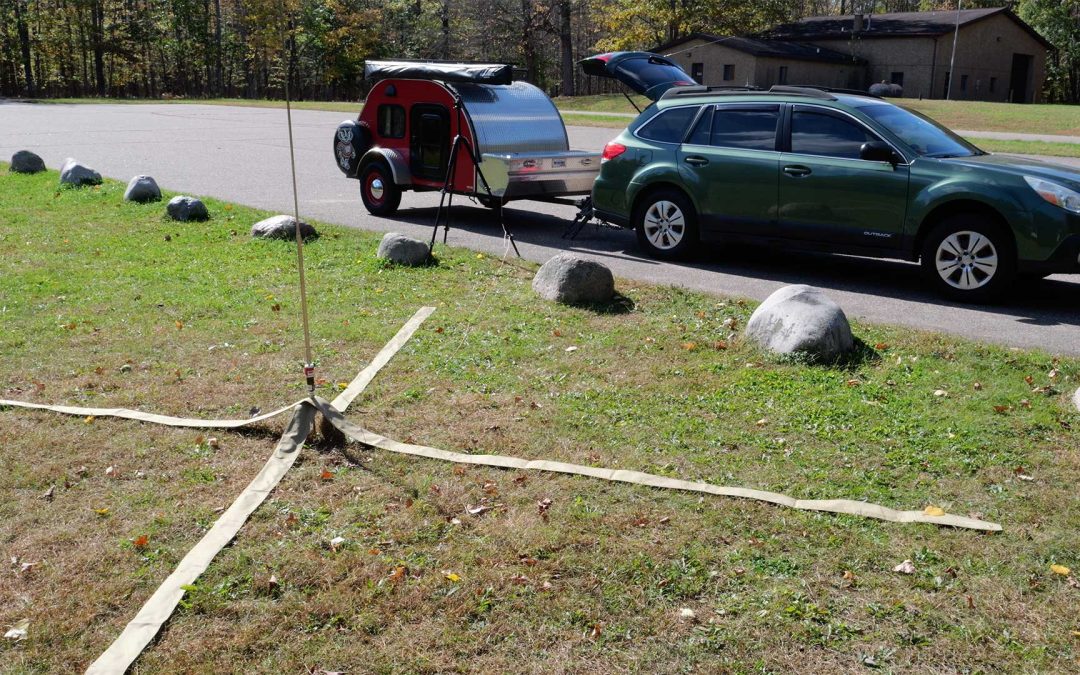I’m a long time proponent of faraday cloth or window screen as a ground system for your vertical HF antenna. When Dave, KZ9V, and I made that first video over 2 and a half years ago, we didn’t know what the reception would be. So we were quite surprised when the concept really took off. You know an idea will stand the test of time when other adapt and modify it for new purposes. Which brings me to this week’s video.
Chameleon Antenna, has extended and mashed up the concept of the faraday ground network into a system that fits into their ecosphere of products. The result is the CHA FSR or Faraday Strip Radial system. It’s the subject of my video: I tried the Faraday Strip Radials for my antenna, and WOW! https://youtu.be/oMnQppoFhoE
Chameleon CHA FSR Faraday Strip Radial System: https://chameleonantenna.com/v8f9al
Chameleon SS Whip (17, 25 feet) https://chameleonantenna.com/lqrccf
Chameleon CHA Blank Adapter: https://chameleonantenna.com/qccypf
The video goes into what I like and don’t like about the system, but for those that want the TLDR version: It deploys fast, works well, and looks professional. I am also surprised with its performance and you will see this in future videos.
Elevated vs Ground level Radial Systems
I will admit, I’ve been playing the last year with elevated radials for my portable vertical antennas. But ground mounted radials have a place in your kit.

What I like about ground level radials is that they are non resonant. You can lay out your radials and adjust whip to your resonant frequency of choice, not worrying about making major changes to the radials length. The tradeoff is efficiency, but in portable operations this tradeoff may be worth the convenience.

With elevated radials, you get a highly efficient antenna system (According to Greg, KJ6ER, over 90% efficiency with a 1/4 wave system). But you need to adjust all the parts to reach that resonant point. Elevated radials also present physical concerns with people interfering or tripping over them.
So which is best? According to Rudy Severn’s, N6LF, 32 ground radials will only be similar ineffectiveness to four elevated ones, and 16 radials slightly less than that.
How do elevated multiband and ground surface radial systems compare to each other and to a large number of radials on the ground on each band? While the details are tabulated in the In Depth Web page, some conclusions can be summarized.
The differences between a 32 radial mono- band system on the ground and a four radial elevated monoband system on each band are small, as we would expect from our earlier results.
If we compare a 16 radial multiband sys- tem on the ground with the same configura- tion elevated, the elevated system has about a 1 dB advantage on all bands. Doubling the number of radials on the ground will reduce the differences by 0.2 to 0.3 dB. The standard multiband system works just fine if elevated, but when the radials are lying on the ground it’s not quite as good. If a radial system lies on the ground, the rule is you should use more radials to achieve compa- rable performance.
Rudy Severns, N6LF, An Experimental Look at Ground Systems and HF Verticals, QST March 2010.
His general recommendation, is more wire on the ground is better, but the sweet spot is about 12-16 radials. Adding more just adds complexity with marginal gains.
But you can also see how a just a few elevated radials can be highly efficient. Once you raise the radial, you are no longer fighting ground losses.
My advice, pick a system that works for you, know when elevating or using ground radials is justified, and just go with it.
Finishing Up
Which brings me to the impermanence of the Internet. A favorite resource of mine was Rudy Severns, N6LF, blog. Among other things it was a repository of antenna and ground system articles that were published in QST and QEX magazines. Unfortunately they were hosted on Typepad and Typepad has seemingly shut down. This is a loss to the ham radio community as it was an easy link and reference I could send others to concerning ground system efficiency and the benefit of raised vs ground level radials. The articles still live in the ARRL’s QST archives, but you need to be a league member to view them (access to the vast QST archive is a benefit to membership). Fortunately I did find Rudy’s series of articles on ground systems, including the March 2010 issue of QST titled: An Experimental Look at Ground Systems and HF Verticals via the Internet Archive. Read and download the articles while you still have a chance:
I hope to get you in the log soon
Michael
KB9VBR

Recent Comments